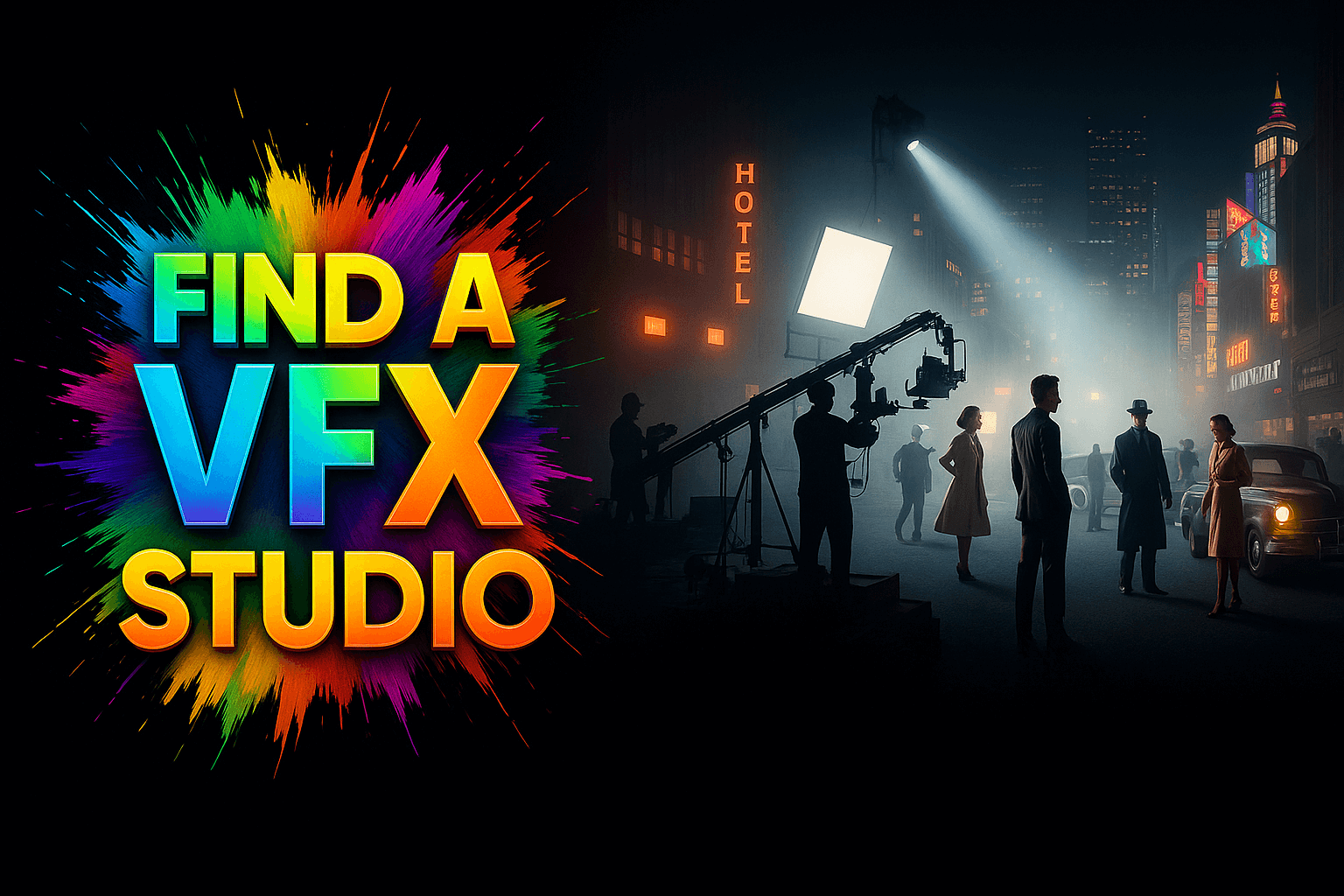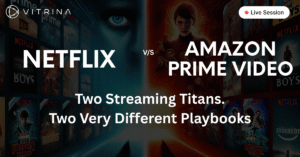How to Strategically Find a VFX Studio for Your Next Project

Introduction
In the modern media landscape, visual effects (VFX) are no longer an optional add-on; they are a fundamental component of storytelling. From blockbuster franchises to episodic dramas, the integration of high-quality digital imagery is essential for captivating audiences and achieving a project’s creative vision.
The challenge for today’s production executives is not whether to use VFX, but how to strategically find a VFX studio that aligns perfectly with a project’s unique needs, budget, and timeline.
In an industry with a rapidly expanding global network of service providers, relying on outdated methods is a significant risk. This article will provide a strategic framework for navigating this complex market, ensuring every decision is backed by intelligence, not just intuition.
Key Takeaways
| Core Challenge | The fragmented global market for VFX studios makes it difficult for executives to find, vet, and partner with the right creative and technical collaborators. |
| Strategic Solution | Adopt a data-driven approach to sourcing and vetting VFX studios, focusing on verified expertise, past collaborations, and technical capabilities. |
| Vitrina’s Role | Vitrina is a leading platform that provides real-time, verified intelligence on global film and TV projects, company profiles, and executive contacts to address the industry’s fragmentation challenge. |
The Three Pillars of VFX Sourcing
To find a VFX studio effectively, a strategic approach must be built on three core pillars: creative alignment, technical capability, and logistical fit. Ignoring any of these can lead to costly revisions, production delays, and a final product that falls short of expectations.
A VFX studio is a creative partner, not just a service provider. You must find a studio whose artistic sensibility and track record match your project’s aesthetic. A studio that excels in photorealistic creature effects may not be the best fit for stylized motion graphics, and vice versa.
Evaluating a studio’s reel and portfolio is critical to assessing this fit. Look for work that demonstrates a deep understanding of your specific needs, whether it’s complex environment creation, character animation, or subtle compositing.
The visual effects market is highly technical. A studio’s capability is determined by its software proficiency (e.g., Houdini, Nuke, Maya), its rendering pipeline, and its ability to integrate seamlessly with your own production workflow.
According to a 2025 report by Research Nester, the global visual effects market is expected to reach over USD 27 billion by 2026. This data underscores the central role that technical proficiency plays in this rapidly growing industry.
Ensure the studio has the infrastructure to handle the scale of your project, from a small number of shots to a full-scale sequence with thousands of assets.
Finally, a logistical fit covers the practical aspects of collaboration. This includes budget, timeline, and communication.
Can the studio meet your deadlines without compromising quality?
Are their communication tools and processes compatible with your team’s?
In a globalized industry, time zone differences and language barriers can become significant hurdles. A strategic search requires you to look for a partner with a proven track record of successful cross-border collaboration. By focusing on these three pillars, you can move beyond a simple search for a vendor and begin the process of identifying a true strategic partner.
Challenges in the Current VFX Market
Despite the industry’s growth, finding the right studio remains a major challenge. The fundamental problem is a lack of market visibility. The global entertainment supply chain is vast and fragmented.
A production executive may know the names of a few major players, but they often lack the intelligence to find the right niche studio, an emerging talent in an international market, or a studio with specific expertise in a particular type of visual effect.
This forces them to rely on personal networks and outdated directories, which are inefficient and often lead to missed opportunities. This fragmentation creates a vicious cycle. Without a centralized, verified source of data, it is difficult to properly vet a potential partner.
How can you verify a studio’s claimed credits?
How do you find the key decision-maker to initiate a conversation?
The manual process of research is time-consuming and often yields incomplete information, leaving executives to make high-stakes decisions with an incomplete picture.
A Strategic Framework for Vetting
To overcome these challenges, a strategic framework for vetting is essential. This framework moves beyond a studio’s showreel and focuses on the business intelligence needed to make an informed decision.
Before you even begin a search, ensure your project is properly tracked and managed internally. A robust project management system can help you define the specific VFX needs, budget, and timeline, which are essential inputs for your search. Next, conduct a data-driven search by using a professional intelligence platform.
This allows you to quickly filter for and identify a curated list of potential partners who have a proven track record of delivering the exact services you need.
Once you have a shortlist, the next step is to verify their track record. Do not just rely on a studio’s self-reported credits. Cross-reference their past projects and collaborations to ensure their claims are accurate.
A reputable platform will provide verified information on a company’s history, the executives who work there, and their past creative partnerships. This level of due diligence is non-negotiable when millions of dollars are on the line.
Finally, connect with the right people. A major pain point in the industry is finding the specific executive responsible for new business or project intake.
An intelligence platform that provides verified contact information for key decision-makers can save countless hours of manual outreach and ensure your pitch gets to the right desk. The most successful executives rely on a continuous, data-driven approach to market intelligence to stay ahead of the curve.
How Vitrina Transforms the Sourcing Process
Vitrina is an intelligence platform designed to operationalize this strategic framework. It provides the data and tools to move from a manual, guesswork-based process to a proactive, data-driven one when you need to find a VFX studio.
Vitrina’s core capabilities directly address the pain points of an executive searching for a VFX partner. With a database of over 500,000 global projects and 160,000 companies, it offers unparalleled market visibility. You can search for VFX studios based on their specific services, the genres they specialize in, and their recent projects.
This allows you to quickly generate a shortlist of potential partners who have a proven track record of success in your exact niche.
Moreover, Vitrina provides the crucial business intelligence needed for due diligence. Its company profiles include verified information on key executives, past clients, and collaborators.
This lets you assess a studio’s operational scale and market reputation before you even pick up the phone. The platform also includes a directory of over 3 million executives, making it simple to find and connect with the specific person you need to reach, bypassing the traditional gatekeepers. Vitrina’s human-verified data ensures you are making a decision based on accurate, real-time intelligence.
Conclusion: Powering Your Next Strategic Move
In an era where visual effects are a cornerstone of modern content, the ability to find a VFX studio efficiently and strategically is a critical skill for any production executive. The days of relying on word-of-mouth and manual research are over.
The sheer size and fragmentation of the global market demand a data-driven approach. By leveraging a professional intelligence platform like Vitrina, you can gain a complete, verified view of the entertainment supply chain.
This empowers you to identify, vet, and connect with the perfect creative and technical partners for your project, ensuring a successful outcome and a stronger competitive position in the market.
Frequently Asked Questions
Beyond artistic skill, look for a studio’s proficiency with industry-standard software such as Maya, Houdini, and Nuke. Also, consider their rendering capabilities, and their ability to integrate their pipeline with your project’s workflow.
The best way to verify a studio’s work is to cross-reference their project credits with a trusted industry intelligence platform. This allows you to confirm their involvement in past films and shows, and to assess the scale and quality of their contributions.
The size of the studio depends on the scope of your project. Large studios may have the resources for a massive, effects-heavy film, while a smaller, boutique studio might offer a more personalized approach and specialized expertise for a niche project.















































